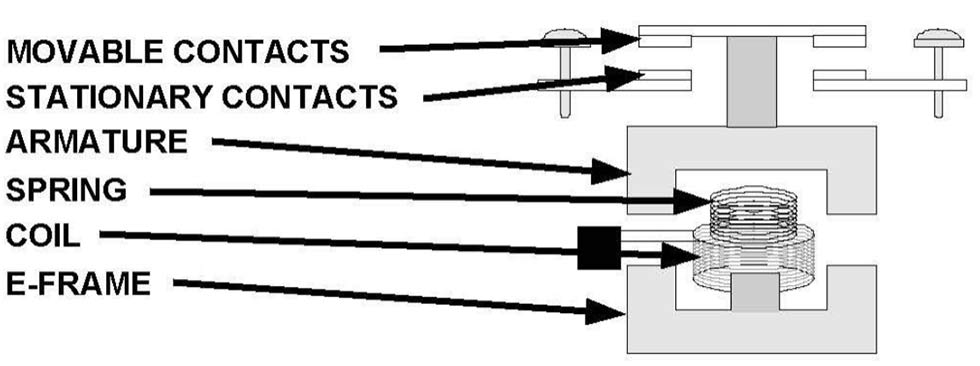Contactors and starters, typically housed within enclosed control units or motor control cabinets, are used to control flow through pumps, exhaust fans, heaters, control panels and various other ancillary equipment. Within the wastewater space, these components are commonly used when moving water from one processing tank to another, or for the control of the facility’s exhaust system.
With an aging infrastructure consisting of nearly 15,000 nationwide wastewater treatment facilities, many in the water/wastewater industry find themselves needing to make the decision of whether to repair or replace their aging pumping systems and the components within.

IMAGE 1: Components of a contactor (Images courtesy of Eaton)
Based on the American Society of Civil Engineers (ASCE) Infrastructure Report in 2017, it was estimated that by 2032, more than 300 million users will be connected to centralized treatment plants—a 23.3 percent increase from 2017. Therefore, the work on these systems should be thoroughly considered, as these not only need to be reliable, but they also need to handle an increased demand.
There are primary factors to consider when faced with the ultimate question of “repair or replace?” Since contactors and starters are typically used as components of larger assemblies throughout the processing system, it is important to understand the considerations to be made when addressing these components.
Those considerations include:
- the state of the current system
- component replacement options
- repair versus replace cost
State of the System
The key components to assess when determining the state of the contactor are the contacts, coil and the overload, if the contactor is part of a starter. These are also the primary components that can be replaced without having to replace the entire contactor or starter.
The easiest components of a contactor or starter to access are the contacts and coil. A simple way to check the contacts is to examine if the surface of the contacts are badly corroded or worn away. If the surface of the contacts exhibit one of these conditions, the contacts need to be replaced.

IMAGE 2: Considerations when deciding whether to repair or replace
Within the enclosed control unit or the motor control cabinet, there may be other components such as logic controls, relays, soft starters and a variety of other industrial control components. These components should be assessed for appropriate function as well.
With a higher quantity of components within, the difficulty of replacing parts or specific components may increase. If many components within the assembly need to be repaired or replaced entirely, it can potentially be more cost effective to replace the entire assembly as a whole.
Cables routed to the assembly should also be assessed. Aged insulation systems are susceptible to wear or cracking, so check to ensure that these are in healthy condition. In the case of replacing the full assembly, it is unlikely that a new enclosed control or motor control cabinet will have identical line and load cable terminations to the existing unit, so it is important to account for the associated labor.
Component Replacement Options
Replacing components can be a cost-effective solution to extend the life of an assembly while limiting downtime. The first consideration when looking to replace a component is whether or not there is a direct replacement available.
In some cases, a direct replacement may be available. However, depending on the age of the system, the original product used may be obsolete or have limited availability. Lead times, downtime and labor should be considered in cases where limited product is available.
As with contactors and starters, parts of these components can also be replaced in order to avoid full replacements.
However, as the contactor size increases, the cost of the replacement components will likely increase as well. So, if there is damage to more than one of these parts, compare the total cost of the parts replacements versus replacing the contactor or starter as a whole.
When replacing components within an assembly without a direct replacement, it is important to take into account the physical constraints of the assembly. Additional mounting features may need to be incorporated in order to accommodate a new product, which may result in additional labor costs and parts.
Product footprint may also be a factor to consider. Though most technologies have become smaller over time, there may be additional functionalities desired that result in add-ons or additional space needed. If the desired replacement is unable to fit into the previous unit’s footprint, adjustments may be needed to the placement of other components, alternative products or other creative solutions.
A Complex Decision
Ultimately, the question of repair or replace falls to the state of the current system. If there are only a few components that need replacement, with direct replacements available in the market, the decision is simple.
However, when faced with many components that need repair, unavailable replacements, and/or a different connection type, the decision of whether to repair the assembly or replace it can become more complex. In these situations, all options should be compared and fully considered in order to make the best decision for the facility.
